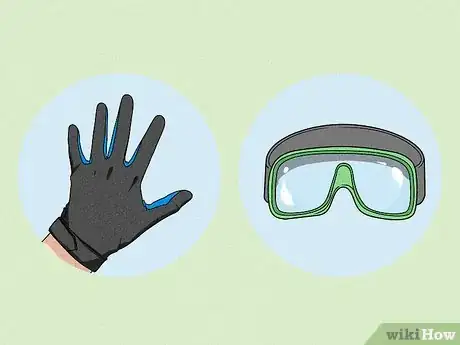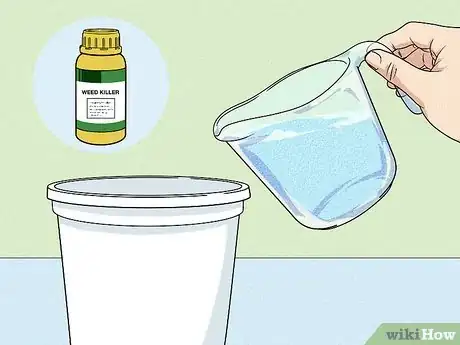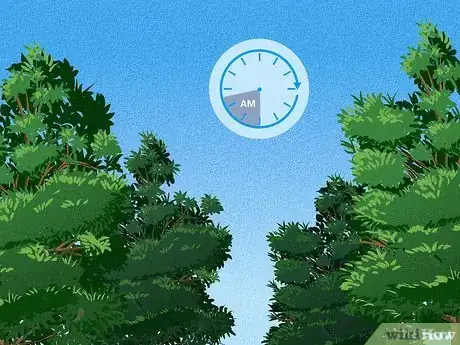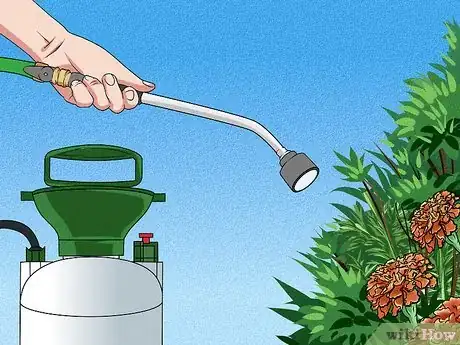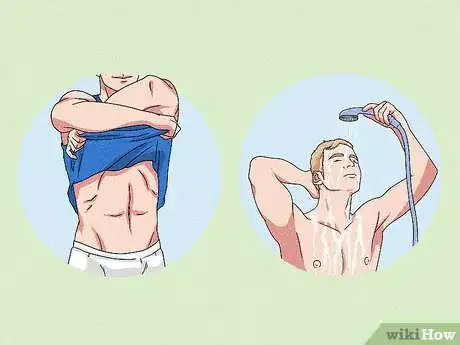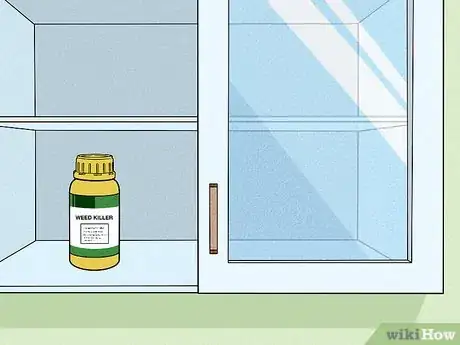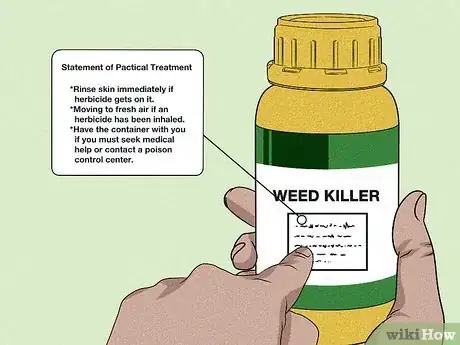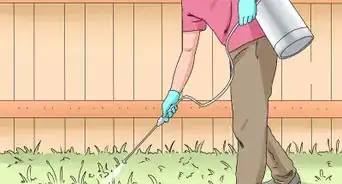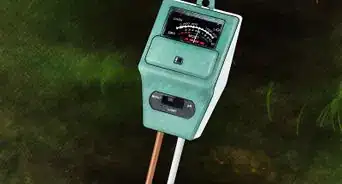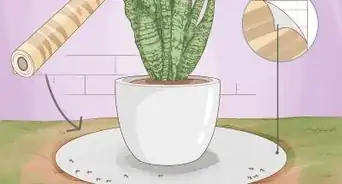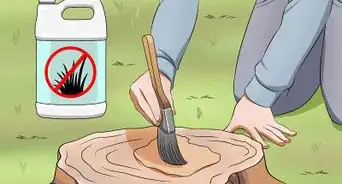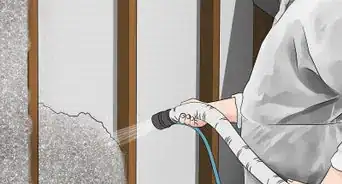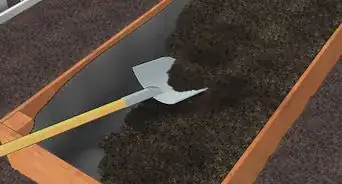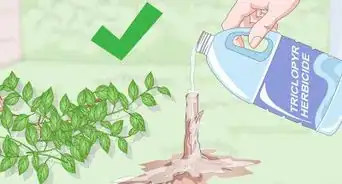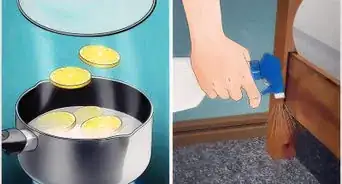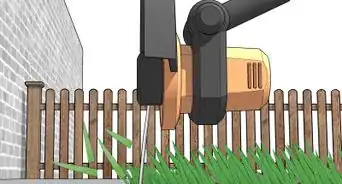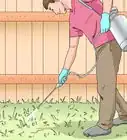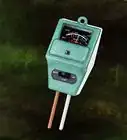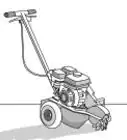X
wikiHow is a “wiki,” similar to Wikipedia, which means that many of our articles are co-written by multiple authors. To create this article, 12 people, some anonymous, worked to edit and improve it over time.
This article has been viewed 44,912 times.
Learn more...
Herbicides are an effective way to control weeds, but these poisonous chemicals for plants can also be extremely dangerous to humans, animals and the environment. For these reasons, it is extremely important to know how to apply herbicides safely. Proper weed killer application is not only safer, but more effective.
Steps
-
1Read the label carefully before you apply herbicides. For any herbicide use, the label will tell you:
- Specific purpose of the herbicide.
- Level of toxicity, with "caution" being the least toxic and "danger" the most toxic.
- Herbicide safety information.
- Protective clothing and equipment needed for weed killer application.
- Instructions for Herbicide use, storage and disposal.
-
2Wear protective clothing and equipment mentioned on the label, such as goggles, gloves, etc.
- Do not wash protective clothing used to apply herbicides with other laundry.
Advertisement -
3Make certain you have the correct equipment for weed killer application. This may include dusters, sprayers or granular applicators.
- Check for leaking connections or nozzles.
- You can also choose ready-to-use herbicides, such as sprays or aerosols to apply herbicides.
-
4Mix herbicide for pesticide use according to the label, using the exact proportions.
- Mix only the amount that is needed. You should not store mixed herbicides.
- Calibrate equipment before the weed killer application.
-
5Choose the best day and time of day for safety in weed killer application.
- Much of the danger of herbicides use comes from breezy days that cause particle drift.
- Never apply herbicides when it's windy and stop if the wind picks up.
- Mornings and evenings are usually better times of day for weed killer application.
-
6Apply herbicides in a continuous manner with little overlap.
- Spray so you don't have to walk or step in application areas.
- Follow specific label directions for application.
- Use all of mixed herbicide.
-
7Clean up after weed killer application.
- Rinse spray equipment and flush hoses and nozzles.
- Wash yourself, clothing and protective equipment. Remove clothing before washing face, hands and body.
-
8Store herbicides in original containers in a locked cabinet away from temperature extremes and away from children and pets.
- Avoid having to dispose of any herbicide by buying only what you need.
- If you must dispose of herbicides, contact a waste collection program.
- Rinse empty herbicide containers before wrapping in newspapers and sending to a sanitary landfill.
-
9Know what first aid procedures are required by reading the "Statement of Practical Treatment" on the pesticide label ahead of time. General procedures include:
- Rinsing skin immediately if herbicide gets on it.
- Moving to fresh air if an herbicide has been inhaled.
- Have the container with you if you must seek medical help or contact a poison control center.
Advertisement
Community Q&A
-
QuestionIf apply it to a crop, are there any side effects to the crop?
 Juani LisboaCommunity AnswerThat will depend on the herbicide and the crop, because there are wide-spectrum herbicides, such as RoundUp or glyphosate, and there are specific ones. The specific ones are generally directed to be against side leaf plants or narrow leaf plants (affecting one type but not the other). Whether it is specific or not should be written on the label. If it is a wide-spectrum one, it should be applied away from the crop, or even better, before the crop seed is even in the soil.
Juani LisboaCommunity AnswerThat will depend on the herbicide and the crop, because there are wide-spectrum herbicides, such as RoundUp or glyphosate, and there are specific ones. The specific ones are generally directed to be against side leaf plants or narrow leaf plants (affecting one type but not the other). Whether it is specific or not should be written on the label. If it is a wide-spectrum one, it should be applied away from the crop, or even better, before the crop seed is even in the soil. -
QuestionAre there any other specifics besides what's written on the label? What about the application process, for example?
 Community AnswerDifferent herbicides have different safety profiles and different application methods. It is important to read the label to understand how to safely handle this substance and get the most out of using it. This is mandatory with industrial herbicides because misapplication can have real and harmful effects.
Community AnswerDifferent herbicides have different safety profiles and different application methods. It is important to read the label to understand how to safely handle this substance and get the most out of using it. This is mandatory with industrial herbicides because misapplication can have real and harmful effects.
Advertisement
Warnings
- Homeowners are liable for misuse of herbicides on their property.⧼thumbs_response⧽
- No eating, drinking or smoking when you apply herbicides or before you clean up.⧼thumbs_response⧽
- Use separate equipment for herbicides and insecticides. Insecticide residues can kill plants.⧼thumbs_response⧽
- Never pour herbicides down the drain or allow residue to get into water supplies for pesticide safety.⧼thumbs_response⧽
Advertisement
About This Article
Advertisement

